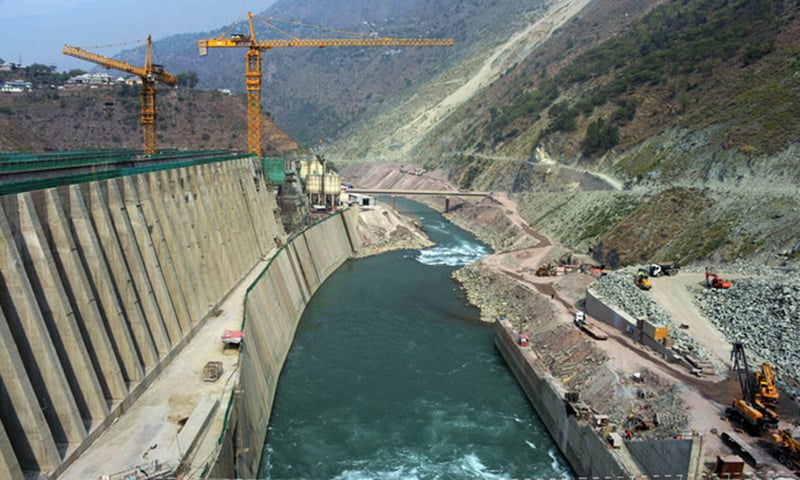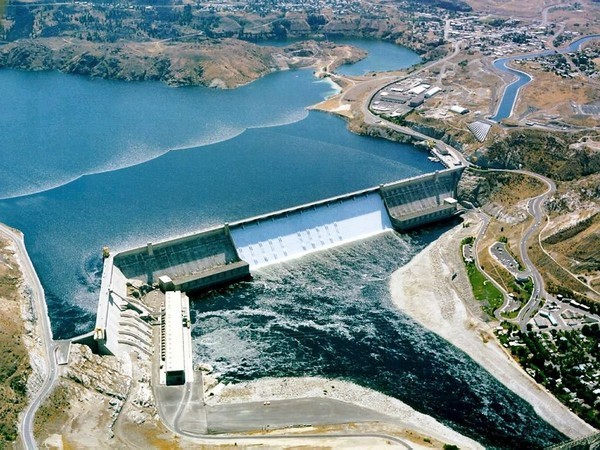Dams are built for a variety of reasons that can include flood control, irrigation, and the production of hydroelectricity. With climate change and variable weather patterns, it has become increasingly important to build dams to store water for later use. In this blog, Graana.com, Pakistan’s smartest property portal, has discussed all the dams in Pakistan under construction.
List of All the Under Construction Dams in Pakistan
The table below enlists all the dams under construction, along with their respective provinces and starting year of construction.
| Dam | Province | Construction Began |
| Kurram Tangi Dam | KPK | 2016 |
| Dasu Dam | KPK | 2020 |
| Mohmand Dam | KPK | 2019 |
| Kalam Dam | KPK | – |
| Othla Dam | KPK | – |
| Jabba Dam | KPK | – |
| Jalozai Dam | KPK | – |
| Dadocha Dam | Punjab | – |
| Nai Gaj Dam | Sindh | – |
| Darawat Dam | Sindh | – |
| Naulong Dam | Balochistan | – |
| Basha Dam | Gilgit-Baltistan | 2019 |
Kurram Tangi Dam
Kurram Tangi Dam is a multipurpose dam located in the Federally Administered Tribal Area, across the Kaitu River (which is now known as the Kurram River).
It is about 14 kilometres upstream of the Kurram Garhi Headworks and 32 kilometres north of Bannu City (FATA).
Kurram Tangi Dam has a total power-producing capacity of 83.4 MW and is currently under development on the Kaitu River in North Waziristan, Pakistan.
The construction of the project will be done in two stages. Stage I consists of an 18-foot-tall weir. It is expected to be completed in three years and will irrigate 16,000 acres of land in the North Waziristan Agency. Moreover, it will generate around 18MW of energy.
Notable Features
| Height of Dam | 322 ft. |
| Live Storage | 0.90 MAF |
| Gross Storage | 1.20 MAF |
| Power Generation | 83.4 MW |
| Annual Energy | 350 GWh |
| New Command Area | 83,380 Acres |
Dasu Dam
When it comes to dams in Pakistan under construction, Dasu Hydropower Project (DHP) is another embarkment dam that entails the construction of a 4,320MW hydropower plant in Dasu town in Kohistan district of Khyber Pakhtunkhwa (KPK).
The project is around 345 kilometres from Islamabad, 74 kilometres downstream of the Diamer Basha Dam, 240 kilometres upstream of the Tarbela Dam, and 74 kilometres downstream of the Diamer Basha Dam.
Pakistan’s Water and Power Development Authority (WAPDA) is developing the run-of-river hydroelectric project in two stages. It is one of the hydropower development projects featured in WAPDA’s Vision 2025 Program, launched in 2001, and the Government of Pakistan’s Power Policy 2013.
A total of 12 hydropower units with a combined capacity of 360MW will be installed, six in the first phase and six in the second.
Phase one will have a capacity of 12,300GWh per year, while phase two will increase it to 21,700GWh per year.
Notable Features
| Dam Height | 242 m |
| Dam Type | RCC Gravity Dam |
| Installed Capacity | 4,320 MW |
| Annual Energy | 21,485 GWh |
| Objectives | To Generate Electricity |
| Execution by | WAPDA |
Mohmand Dam

Mohmand Hydropower Project, with an installed capacity of 800 megawatts, is being built on the Swat River in Pakistan’s Khyber Pakhtunkhwa region. The project entails the construction of a dam as well as a combined power plant.
The project is being implemented by Pakistan’s Water and Power Development Authority (WAPDA). It was first suggested in the early 2000s, but construction began in 2017 after the engineering and design plans were completed.
Expected to cost PKR309 billion ($2.17 billion), it was approved in March 2019. The project’s groundbreaking ceremony took place in May 2019, with commissioning set for July 2024.
Mohmand Dam is projected to alleviate flooding in Pakistan’s Peshawar, Charsadda, and Naushera regions, while also irrigating 16,737 acres of land. The power plant’s annual energy output is projected to reach 2,862GWh.
Notable Features
| Type of Dam | Concrete Faced Rockfill |
| Height of Dam | 213 m (700 ft.) |
| Gross Storage | 1.239 MAF |
| Live Storage | 0.676 MAF |
| Power Generation | 800 MW |
| Annual Energy | 2,862 GWh |
| Cultivable Command Area | 16,737 Acres |
Nai Gaj Dam
Nai Gaj Dam is one of the embankment dams in Pakistan under construction, located on the Gaj River in the gorge area at the edge of the Kirthar Mountains range, some 65 kilometres (40 miles) north-west of Dadu city in Sindh.
Its power station will have a 4.2 MW installed capacity when it is finished. Techno Consult International (TCI) of Karachi, Pakistan, will provide consultancy services.
Work on the dam started in May 2012. The project, which was supposed to be finished in three years, has been significantly delayed, with the cost rising from an initial estimate of Rs. 17 billion to Rs. 47.7 billion in 2019.
By the end of 2018, roughly 51% of the construction work had been finished. The dam will be finished in 2024, according to the latest reports.
Notable Features
| Type of Dam | Earth Core Rockfill Dam |
| Height of Dam | 194 ft |
| Gross Storage | 300,000 AF |
| Live Storage | 160,000 AF |
| CCA | 28,800 Acres |
| Power Generation | 4.2 MW |
| Execution by | WAPDA |
Diamer Bhasha Dam

On the River Indus, between Kohistan district in Khyber Pakhtunkhwa and Diamer district in Gilgit Baltistan, the Diamer-Bhasha Dam is a concrete-filled gravity dam in its initial phases of development.
In 1998, the then-President of Pakistan laid the foundation stone. The dam is located 40 kilometres downstream of Chilas town and 315 kilometres from Tarbela Dam, and is named after a place called “Bhasha”.
With a height of 272 metres, the eight million acre-feet (MAF) reservoir will be the world’s tallest roller compact concrete (RCC) dam.
Upon completion, Diamer-Bhasha dam would:
- Produce 4800 megawatts of electricity through hydropower generation
- Extend the life of Tarbela Dam located downstream by 35 years
- Store an extra 10.5 cubic kilometres (8,500,000 acre-ft) of water for Pakistan that would be used for irrigation and drinking
- Control flood damage by the River Indus downstream during high floods
The spillway will be 272 metres tall, with fourteen gates measuring 11.5 metres by 16.24 metres. The reservoir will have a gross capacity of 10 cubic kilometres (8,100,000 acre-ft) and a live storage capacity of 7.9 cubic kilometres (6,400,000 acre-ft).
Two subterranean powerhouses, one on each side of the main dam, with six turbines on each side and a total installed capacity of 4500 MW, are being proposed.
Notable Features
| Dam Type | Roller Compacted Concrete (RCC) |
| Height of Dam | 272 metres |
| Spillways | 14.Nos Gate (11.5m x 16.24m) |
| Gross Storage | 8.10 MAF (10 BCM) |
| Live Storage | 6.40 MAF (7.9 BCM) |
| Installed Capacity | 4,500 MW |
| Annual Energy | 18,097 GWh |
| Execution by | WAPDA |
To read more about the construction sector of Pakistan, visit our blog.




